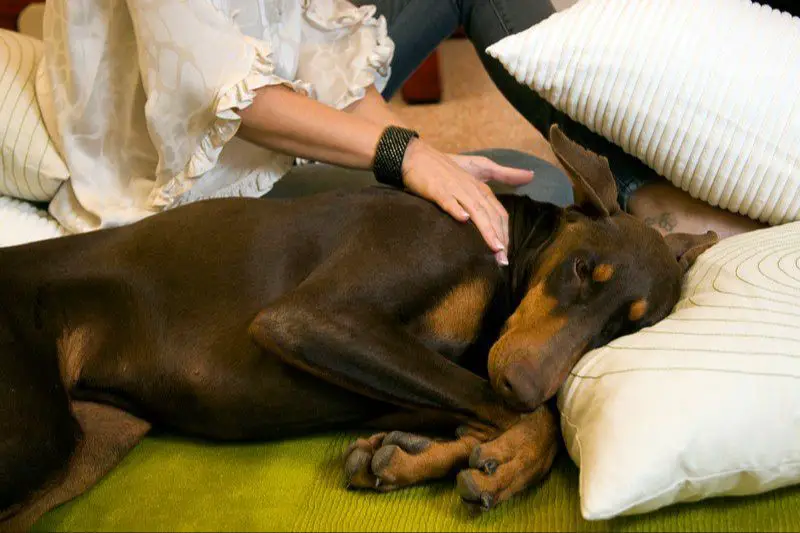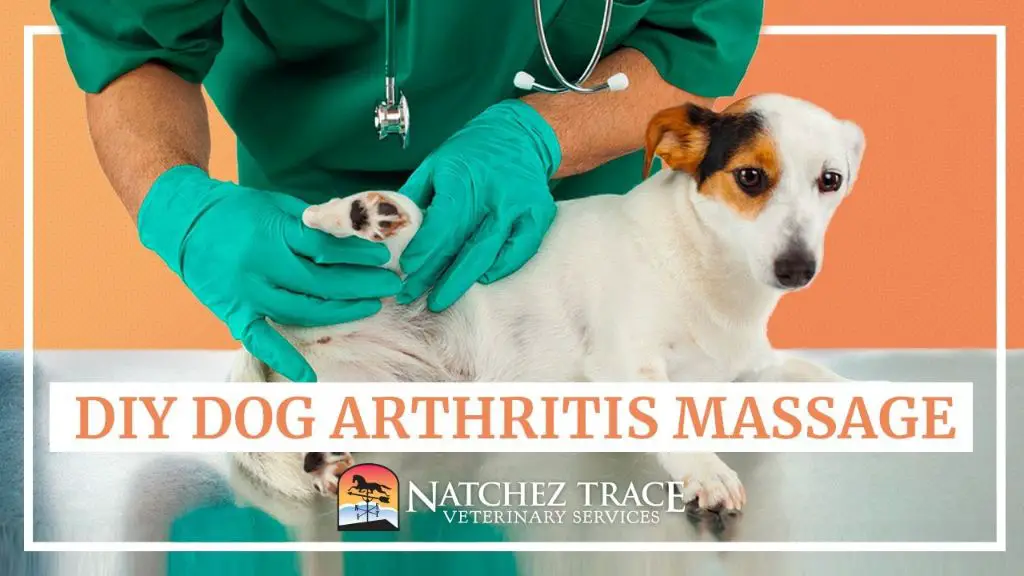Introduction
Regular massage can provide many benefits for dogs. Massage helps dogs relax both physically and mentally, which is key to their overall wellbeing. Physically, massage can increase blood flow, relax muscles, help stiff joints, and improve range of motion. Massage also releases endorphins which relieve pain and stress. Mentally, the relaxing sensation of massage helps anxious or high-strung dogs feel more at ease. Massage strengthens the bond between owner and dog through the intimacy of touch. For senior dogs or dogs recovering from injury, massage can be an important part of managing pain and maintaining mobility.
When Dog Massage May Help
Massaging your dog can provide many benefits, especially if they have sore muscles, joints, or injuries. Here are some common situations when massage may help:
Sore Muscles – Just like humans, dogs can experience muscle soreness and tension, especially after exercise, play, or a long car ride. Massage can help loosen tight muscles and relieve discomfort.
Joint Pain – Many dogs suffer from arthritis and joint issues as they age. Gentle massage around sore joints may increase mobility and flexibility.
Injuries – Massage promotes healing for sprains, strains, tendon injuries, or post-surgery. Focus massage above and below the injury site to improve blood flow and reduce swelling.
Always massage gently around any injured or fragile areas. Check with your vet first if your dog has any medical conditions. When done properly, massage can be an excellent way to provide comfort and aid recovery.
Techniques for Massaging Your Dog
When massaging your dog at home, there are a few basic techniques you can use to help them relax and get the benefits of massage:

Long Strokes – Using your palms and fingers, apply gentle but firm pressure as you glide your hands along the length of the dog’s muscles. Long strokes promote relaxation, improve circulation, and warm up muscles.
Circular Motions – Making small circles with your fingers and thumbs can help loosen tense spots and knots in the dog’s muscles. Use larger circular motions on broader areas of muscle.
Thumb Presses – Placing steady, gentle pressure with your thumbs on specific points of muscle tension and holding for several seconds helps target tightness and spasms. Avoid using your fingertips which may be too sharp.
Focus these techniques on areas of your dog’s body that often have muscle tightness from movement and activity, like the neck, shoulders, back, and hind legs. Adjust pressure based on your dog’s reaction and comfort level.
Parts of the Dog to Massage
There are several parts of your dog’s body that can benefit from massage. Focusing on these areas can help relieve tension, stiffness, and pain.
Legs
Gently massaging your dog’s legs can help increase circulation and flexibility. Use your thumbs to apply gentle pressure on the front and back of the legs. Avoid massaging any sore spots or injuries directly.
Paws
Massaging between the toes and pads of your dog’s paws can help relieve soreness from exercise or play. Use circular motions with your fingers or thumbs. Check for any cuts, scrapes or foreign objects lodged in the paws first.
Back
Use long, gentle strokes along the length of your dog’s back to help relax muscles on either side of the spine. Apply more pressure to areas that seem particularly tense or knotted.
Shoulders
Massage your dog’s shoulders with your hands in a circular motion to release built-up tension. Many dogs carry stress in this area. Avoid areas that elicit a negative reaction.
Neck
Rub gently beneath your dog’s ears and jawline to help calm and relax them. Use light pressure and pay attention to signals of discomfort.
Hips
Massage your dog’s hips in a circular motion to help increase mobility and flexibility. Concentrate on sore spots but keep pressure gentle.
Signs Your Dog Enjoys the Massage

When giving your dog a massage, look for signs that he or she is relaxed and enjoying the experience. Some signs that your dog likes the massage include:
- Leaning into your hands as you massage – If your dog presses against your hands or shifts his body to make contact, he is likely enjoying the massage.
- Becoming very relaxed or even sleepy – Just like people, a calming massage can make dogs become drowsy. If your dog falls asleep during the massage, take that as a sign he is comfortable.
- Licking – Licking your hands or face is your dog’s way of giving you affection. If your dog licks you while being massaged, he’s letting you know that he’s happy.
Paying attention to your dog’s body language and reactions will allow you to tell if the massage is providing comfort or if your dog is feeling any discomfort. Always go slowly and gently when massaging and stop if your dog seems bothered at all.
Precautions Before Massaging
There are a few precautions to keep in mind before massaging your dog. First, avoid areas where your dog appears to be in pain or discomfort. Pay attention to your dog’s body language and facial expressions during the massage and steer clear of spots that elicit a negative reaction. Pressing too hard can also cause pain or scare your dog, so keep the massage pressure gentle. Start light and gradually increase pressure while gauging your dog’s comfort level. It’s generally better to underdo it than potentially hurt your dog by massaging too intensely.
Additionally, never massage areas of swelling, inflammation, cuts, wounds or skin infections. Consult your veterinarian if your dog has any medical conditions before massaging. For dogs that are elderly, very young or in poor health, keep the massage sessions brief and delicate. It’s also important to introduce massaging gradually if your dog is skittish or anxious to help build trust through a calming bonding experience. Take precautions, but with care and attentiveness, massaging can be beneficial for dogs.
When to Avoid Massage
While massage can provide many benefits for dogs, there are some situations where it should be avoided. Below are some of the main conditions and circumstances where dog massage should not be performed:
Open Wounds
You should avoid massaging a dog that has any open wounds, incisions from recent surgery, or areas of broken skin. Massage may irritate or further damage healing tissue and could potentially cause infection.
Infectious Diseases
Dogs with infectious diseases that can be spread by touch, such as ringworm or scabies, should not receive massage. The contact involved with massage could spread the infection to other areas of the dog’s body or to you as the massager.
Edema
Areas of a dog’s body experiencing edema (fluid buildup in tissues) should not be massaged. Massage can potentially worsen edema by increasing circulation to the area. Consult your vet before massaging a dog with edema.
Choosing a Massage Therapist
If you decide to take your dog to a professional for massage therapy, it’s important to find someone properly trained and certified. There are a few certifications to look for when selecting a canine massage therapist:

Certified Canine Massage Therapist (CCMT) – This certification from the International Association of Animal Massage and Bodywork (IAAMB) involves around 200 hours of training and an exam. Therapists with a CCMT have demonstrated knowledge of dog anatomy, physiology, and massage techniques.
Certified Canine Rehabilitation Practitioner (CCRP) – The Canine Rehabilitation Institute confers this certification after 120 hours of coursework and an exam. CCRPs are trained in massage, stretching, therapeutic exercises, and other rehab modalities for dogs.
Additionally, some massage therapists may have other certifications like a veterinary technician degree or other animal bodywork credentials. It’s a good idea to ask about their background and specific training in canine massage.
You can also ask your veterinarian for a recommendation if there is a massage therapist they trust to work with dogs safely and effectively.
Home Massage vs. Professional
Many dog owners wonder if they should give their dog massages at home or take them to a professional masseuse. There are pros and cons to each approach.
The benefits of massaging your dog at home include:
- It’s free – You don’t have to pay for an appointment with a professional.
- It strengthens your bond – Massaging your dog is a great bonding activity for both of you.
- Convenience – You can massage your dog anytime at home.
- Get to know your dog’s body – By massaging your dog frequently, you’ll become familiar with their muscles and joints.

However, there are advantages to taking your dog to a professional masseuse:
- Expertise – They are trained in canine massage techniques and anatomy.
- Advanced techniques – Professionals have access to specialized equipment and techniques.
- Identify issues – They can better detect injuries, sore spots, and areas of tension.
- Focused time – Your dog gets their full attention during the massage.
Overall, occasional professional massages can complement a regular home massage routine for your dog. Focus on home massages for bonding and maintenance, while pros can provide therapeutic attention to specific problem areas.
Conclusion
In summary, massaging your dog can provide numerous benefits when done properly. Massage promotes relaxation, improves circulation, reduces anxiety, enhances the human-animal bond, aids mobility in aging dogs, and relieves muscle soreness. It’s important to observe your dog’s signals during the massage to ensure they are comfortable. While massage can be performed at home, working with a professional who understands dog anatomy may maximize the benefits. With some basic knowledge and care, massage can be an excellent way to improve your dog’s wellbeing and enrich the relationship between you and your pet.